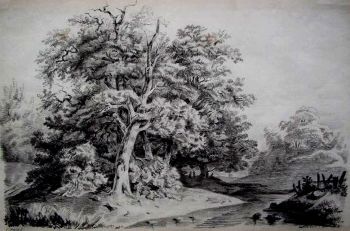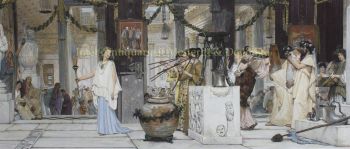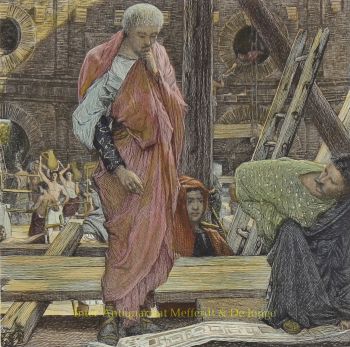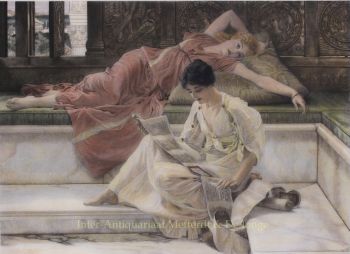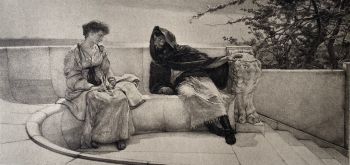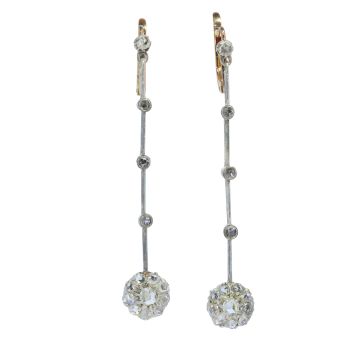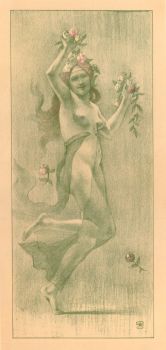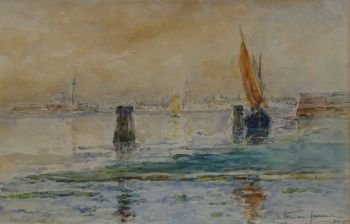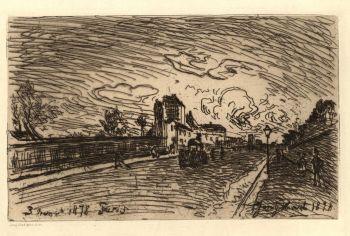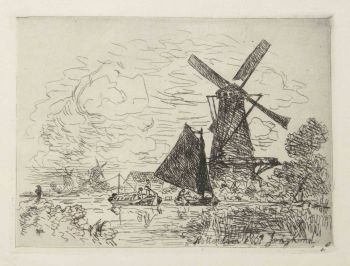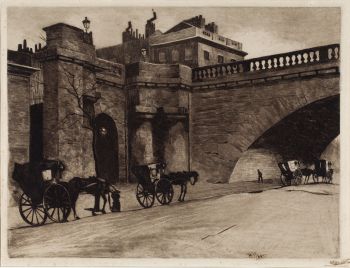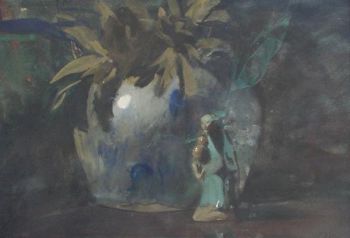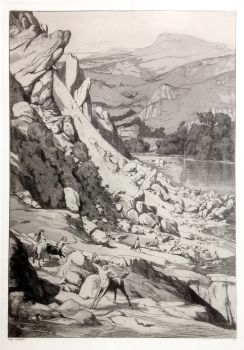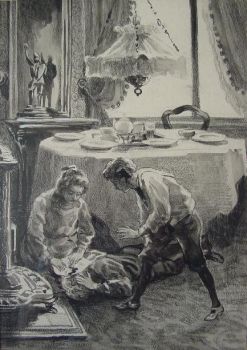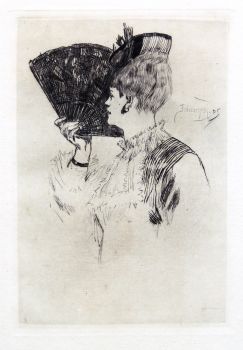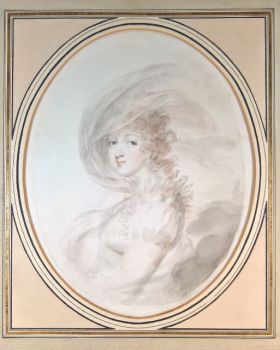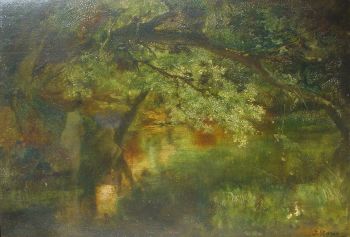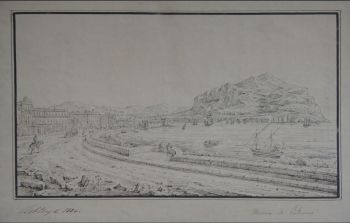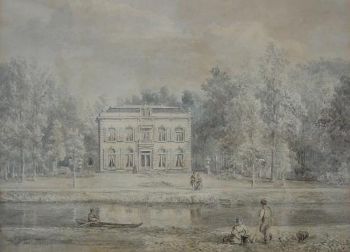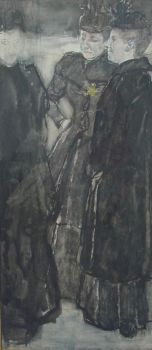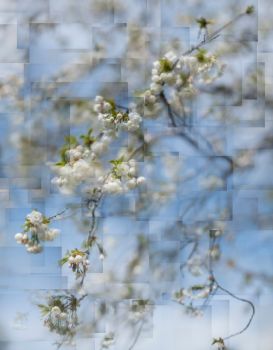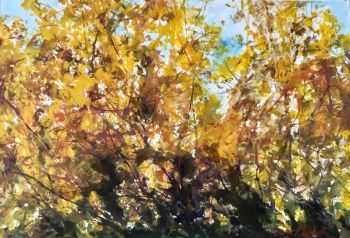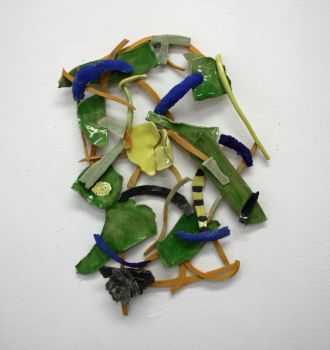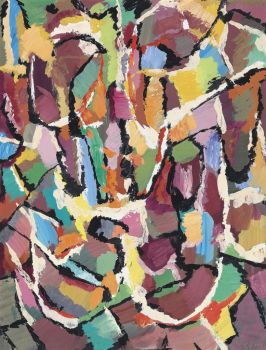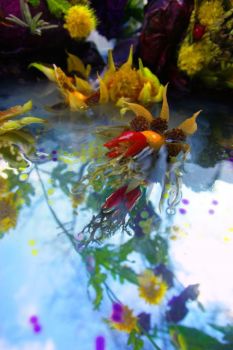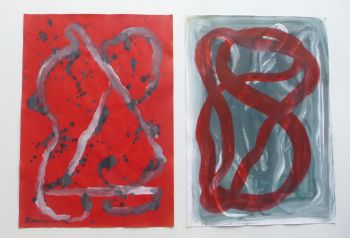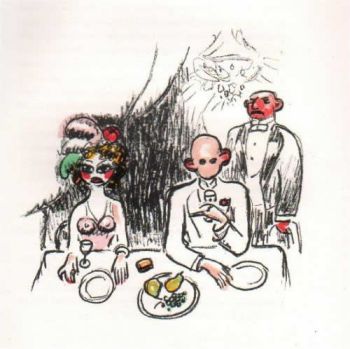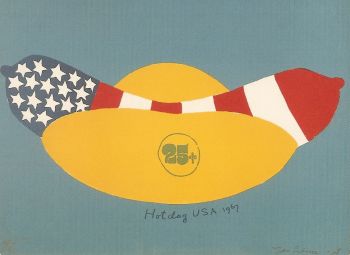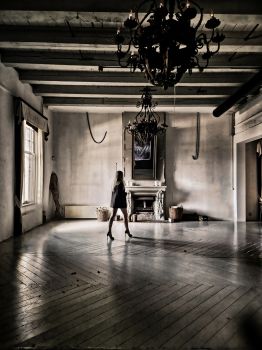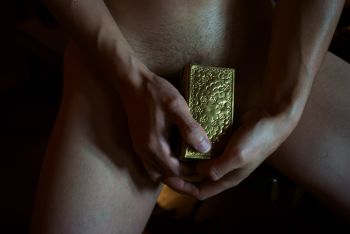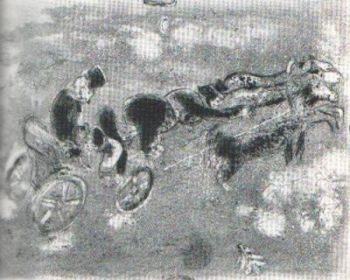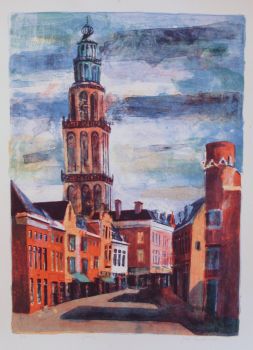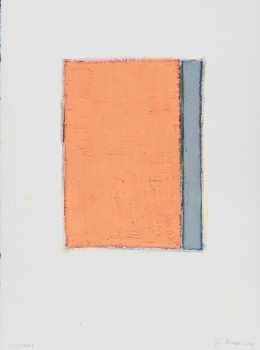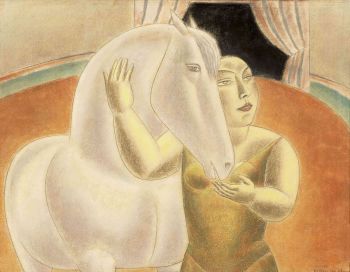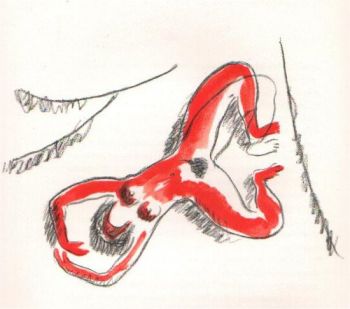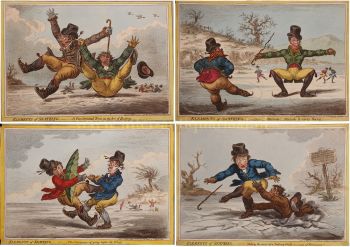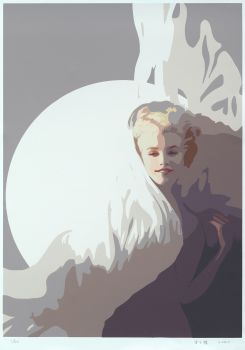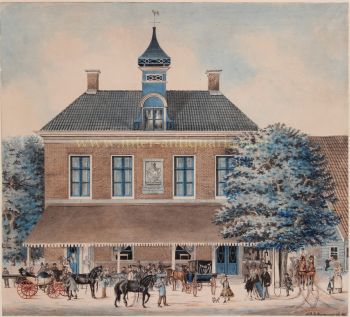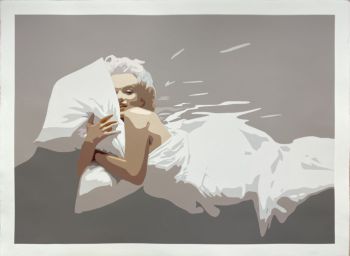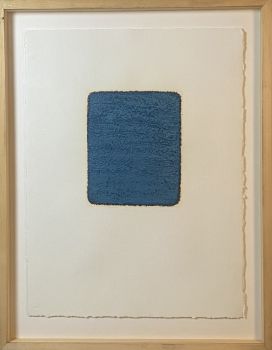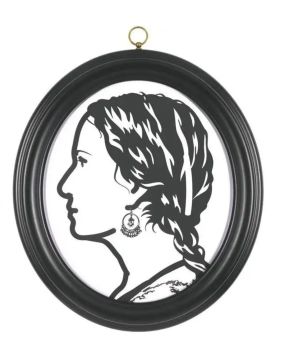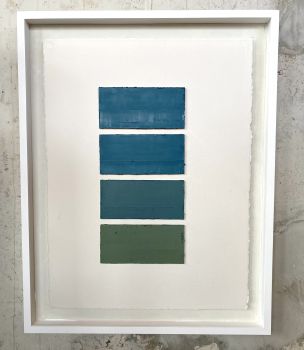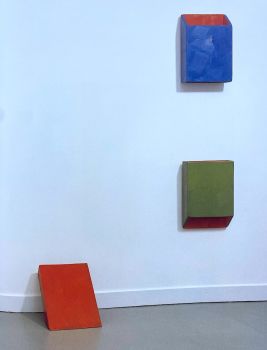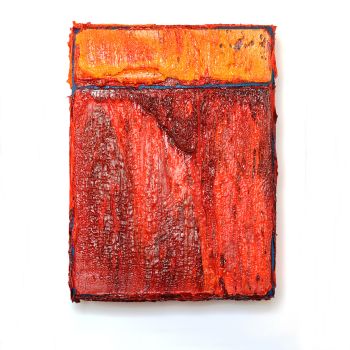Spring 1894
Lawrence Alma-Tadema
PaperPrintPhotographic print
35 ⨯ 47 cm
ConditionVery good
€ 550
Gallerease Selected
- About the artwork
Original photogravure of the painting Spring from Sir Laurence Alma Tadema. Printed in 1894 on thick cream paper in a serie of 400 pieces by 'Photographische Gesellschaft' Image size: 15 cm by 25,5 cm Paperformat: 35 cm by 47 cm The original photogravure depics a procession of women and children descending marble stairs carry and wear brightly colored flowers. Cheering spectators fill the windows and roof of a classical building. Lawrence Alma-Tadema here represented the Victorian custom of sending children into the country to collect flowers on the morning of May 1, or May Day, but placed the scene in ancient Rome. In this way, he suggested the festival's great antiquity through architectural details, dress, sculpture, and even the musical instruments based on Roman originals. The painting was first put on display at the Royal Academy in 1895 and enjoyed great success. The picture's popularity continued over the next few years with prints very much in demand. After a memorial exhibition in 1913, the painting disappeared from the art scene, and it was not until 1970 that it made a comeback. It joined the collection of a certain Mr. Funt, an American TV personality/art collector, and it was subsequently purchased at auction by the Getty Museum in 1972. It was thought at the time to represent the realities of ancient Rome and it took pride of place in the Getty "Roman Villa" in 1974. The apparent authentic "Romanism" of the painting had even inspired certain scenes in Cecil B. De Mille's Hollywood production of "Cleopatra" of 1934. However, further research into the painting's subject and significance suggests it is more an idealised Victorian representation of spring, rather than a specific Roman festival. The scene, with a procession of young people, flowers and musical instruments, is a joyful springtime celebration. It has been likened to the Roman spring festivals: Floralia, Cerealia or Ambarvalia. The artist may have been inspired by descriptions of the spring festival in honour of Ceres or Flora as described by the Roman poet Ovid. It also corresponds to Victorian Mayday festivities, where young girls went out into the countryside and collected flowers, then carried them back in blithesome procession. Alma Tadema presents the scene as a parade in a festive jubilant setting, and it was something the people could relate to. Processions abounded in late Victorian England: receptions for visiting heads of state, royal weddings of Queen Victoria's children/grandchildren, and particularly for the queen's fifty, and then sixty, years of reign. Here, the backdrop is ancient Rome and the procession winds through shining marble passageways. Young girls carry pretty flowers or branches with buds or blossoms. Pipers are making music. Others follow carrying symbolic ritual items, including the bearers of a fine chalice, a casket and an ivory altar. Excited onlookers line the way. These beautifully detailed groups of figures and the surrounding Roman architecture are the key to the painting. Lawrence Alma Tadema was known for his glorious details; it is said that Alma Tadema compositions are the sum of his details. Looking closely, we behold richly ornamented columns and partial columns, full statues that replicate authentic Roman statues in silver and bronze, finely detailed nature elements, and above all, a dazzling feast of delicate yet vibrant spring flowers. The faithfully wrought architecture of this Tadema Rome has numerous columns, arches and balconies to seem almost like a stage set. Indeed, the artist had a background in creating grandiose stage sets for Shakespeare plays in the 1880s that amply satisfied the Victorian taste for spectacle. Against this stage-like background of white marble, and the pale, pastel clothing of the people, the strong bright colours of the flowers and garlands really stand out. The eye goes from one spot of colour to another, then, in the distance, to the red walls of the "royal box", where the viewer pauses to absorb a myriad of refined details. The impact of the picture is the contrast between vibrant colourful flowers and the stark white marble. It is the flowers that provide the most important detail, a detail that reflects the artist's well-known fondness for flowers. However, the flowers in the picture are not all Mayday blossoms; many were selected for their colours and symbolism rather than appropriateness of season. One last detail gives us an insight into the Roman period that Alma Tadema wanted to represent in his celebration of spring: the inscription and relief on the archway at centre left of the picture. The artist has reproduced the dedication sculpted on the Arch of Trajan in Benevento, near Rome, built to commemorate the opening of the Appian Way and completed during the reign of the Emperor Hadrian (reigned 117-138). This leads us to presume that the setting for Lawrence Alma Tadema's joyous "Spring" is Emperor Hadrian's prosperous Rome. Who says that art is a purely visual enjoyment? This gracious painting of "Spring" is full of fragrant air, you can almost smell the faint perfume of the darling buds of May, you can hear the light lilting music, you can feel the warming rays of the sun. "As the sun colours flowers, so art colours life". This was the artist's personal motto, and the idea is present in every Lawrence Alma Tadema composition. Originally from Holland, the young Lawrence, or Lourens as he was originally named, studied art at the Royal Academy of Antwerp. In 1870, he moved to England where he settled permanently in London. He adjusted his name to the more Britannic "Lawrence", and his Dutch origins are often overlooked. Alma-Tadema's paintings also enjoyed popularity later, when his large panoramic depictions of Greek and Roman life caught the attention of Hollywood. Certain scenes in Cecil B. DeMille's film Cleopatra (1934) were inspired by the painting Spring.
This photogravure is from the portfoliobook: "Laurence Alma Tadema, R.A. - A Sketch Of His Life And Work. With A Portrait, An Autograph, And Twenty-Two Illustrations." (London: Berlin Photographic Company) 1895, containing 22 reproductions of works by Tadema, including: a half title-page; a frontispiece showing the artist in his studio; another title-page with a printer's mark; a list of illustrations; a biography of the artist by F. G. Stephens; with head and tail-pieces; totale edition number of 400. Bound in cloth-covered binding inscribed with the title. - About the artist
Lawrence Alma-Tadema is one of the most highly renowned romantic artists of late 19th century Britain. He was born in the Netherlands as Laurens Tadema, to the family of the town notary. Later, as he tried to make his niche in the art world, he changed the spelling of his first name to the more English “Lawrence,” and included his middle name “Alma” as part of his surname, so he would be listed among the “A’s” in exhibition catalogues.
As a child, it was decided that Alma-Tadema would pursue the career of a lawyer, but he suffered a mental and physical breakdown when he was fifteen years old. He was diagnosed as consumptive, given a short time to live, and thus free to pursue a life of leisure and pleasure. Once left to his own devices, he decided to study art, as his mother had paid for art lessons in his earlier childhood and it was one of his interests. He regained his health and studied at the Royal Academy of Antwerp in 1852, where he won several respected awards. His first major work was exhibited in 1858, and it won much critical praise, and creating a sensation in the art world. By 1862, he set own in his own studio to pursue his individual career in art.
In 1869, Alma-Tadema lost his wife of six years to smallpox. Disconsolate and depressed, he ceased painting and his health was failing. Under the advice of his physician, he traveled to England for a medical diagnosis, where he was invited to the house of a fellow painter, Ford Madox Brown. It was here that he laid eyes on Laura Theresa Epps, who was 17 at the time, and fell madly in love with her. Alma-Tadema took advantage of the outbreak of the Franco-Prussian war to relocate to England, where he wasted no time contacting Laura and contracting her in private art lessons. It was during one of these lessons that Alma-Tadema proposed, and they were married shortly thereafter. Alma-Tadema was 34 years old, and the bride 18.
Alma-Tadema spent the next part of his life traveling through Europe, and enjoying the continued success of his paintings. As a man, his bursts of bad temper were eased by his extroverted, warm personality and sense of mischief. A perfectionist and obsessive worker, he also innovated a new numbering technique, which made it difficult for forgers to pass off unoriginal works. In his later years, although his artistic output decreased somewhat, he enjoyed continued success, eventually becoming one of the wealthiest painters of the 19th century. He was knighted in England in 1899.
In 1912, Alma-Tadema traveled to Germany to undergo treatment for stomach ulcer, and died in Germany at the age of 76. After his death, his work was mostly ignored. Due to the drastic changes taking place in art, Alma-Tadema’s artistic genius would not come into the public eye again until the 1960s. His meticulous work had since been used as source material for dozens of Hollywood movies.
Are you interested in buying this artwork?
Artwork details
Related artworks
Lawrence Alma-Tadema
"Caracalla and Geta: Bear Fight in The Coliseum, AD 203" 1907
Price on requestGallerease Selected
 Curated by
Curated byDanny Bree
1 - 4 / 12Unknown artist
Enchanting 1870s Vintage Fly Brooch: Victorian Elegance in Gold1870
€ 4.600Adin Fine Antique Jewellery
 Curated by
Curated byDanny Bree
1 - 4 / 24Carel Nicolaas Storm van 's Gravesande
View on Venice1841 - 1924
Price on requestKunsthandel Pygmalion
Willem Witsen
Waiting carriages in front of Waterloo Bridge1850 - 1900
Price on requestKunsthandel Pygmalion
Jan Voerman sr
Still Life with flowers in a Chinese figurine1850 - 1900
Price on requestKunsthandel Pygmalion
Jan Sluijters
Original illustration of Sluijters for the book: 'Laura's opstel'1881 - 1957
Price on requestKunsthandel Pygmalion
1 - 4 / 24- 1 - 4 / 7
- 1 - 4 / 24
Peter Paul Rubens (circle of)
Portrait of a man dressed up as an oriental man1620 - 1630
Price on requestGallerease Selected
1 - 4 / 12












